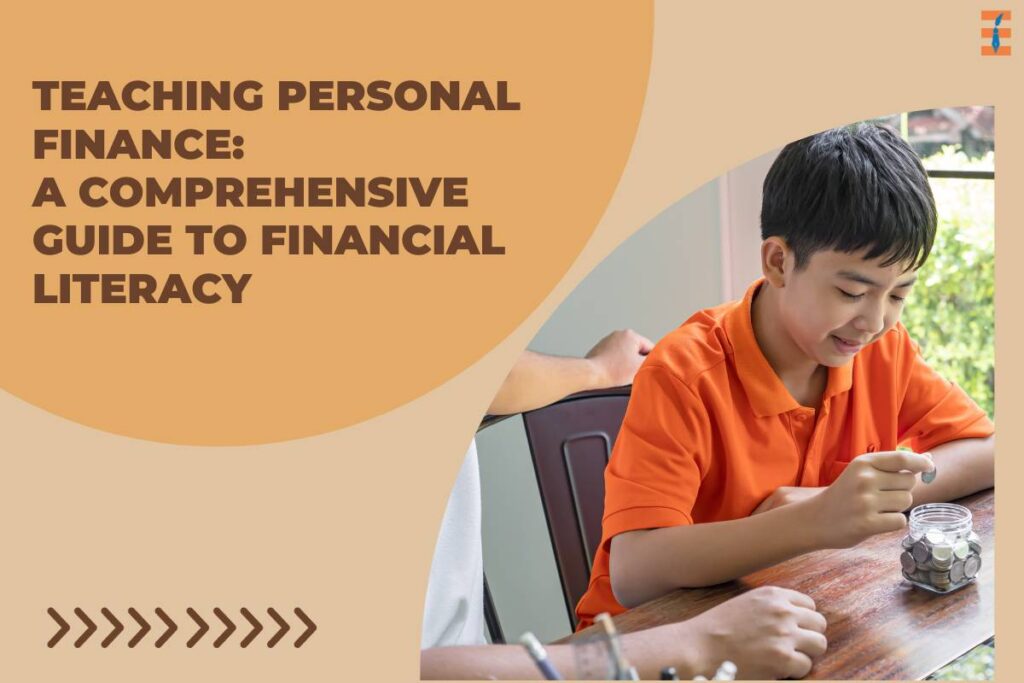In a world filled with economic twists and turns, the need for personal finance education is crystal clear. It’s not just about dollars and cents; it’s about empowering individuals to navigate their financial journey. Whether you’re a teacher, a parent, or just someone keen on financial know-how, diving into the realm of teaching finance is more than rewarding – it’s about sculpting a financially savvy society. This guide isn’t just a roadmap; it’s a passport to a transformative experience. Get ready to embark on the adventure of teaching personal finance, buckle up – because the impact you’re about to make is bound to last a lifetime.
Understanding the Need for Personal Finance Education
Before delving into the intricacies of teaching personal finance, it’s crucial to recognize the pressing need for financial literacy in today’s world. Many individuals, including students, often lack the fundamental knowledge needed to make informed financial decisions. Basic concepts such as budgeting, saving, investing, and understanding credit are frequently overlooked in traditional educational curricula. This knowledge gap can lead to poor financial choices, debt accumulation, and an overall lack of financial preparedness for the future.
Key Concepts in Personal Finance
1. Budgeting

One of the fundamental pillars of personal finance is budgeting. Teaching individuals how to create and stick to a budget is essential for managing income, expenses, and savings effectively. This includes understanding needs versus wants, tracking spending habits, and setting realistic financial goals.
2. Saving and Investing
Introducing the concepts of saving and investing early on can instill a sense of financial discipline. Teach the importance of emergency funds, differentiating between short-term and long-term goals, and exploring various investment vehicles. Concepts such as compound interest and the time value of money should also be covered.
3. Credit Management
Understanding credit is crucial in today’s financial landscape. Teach about credit scores, how they are calculated, and the impact they have on financial opportunities. Discuss responsible credit card use, the implications of debt, and strategies for maintaining a positive credit history.
4. Financial Planning
Provide an overview of financial planning, covering aspects such as setting financial goals, creating a personalized financial plan, and adjusting strategies over time. Emphasize the importance of regular financial check-ups and adapting plans based on life changes and economic conditions.
5. Risk Management and Insurance

Discuss the role of insurance in managing financial risks. Cover different types of insurance, such as health, life, and property insurance, and help learners understand how insurance can safeguard their financial well-being.
Teaching Strategies for Personal Finance
1. Interactive Activities
Engage learners through hands-on activities that simulate real-world financial scenarios. Budgeting games, investment simulations, and case studies can make the learning experience both informative and enjoyable.
2. Guest Speakers
Invite financial experts, advisors, or professionals to share their insights with learners. This real-world perspective can provide valuable context and practical advice, enriching the educational experience.
3. Technology Integration
Leverage technology to enhance the learning process. Use financial management apps, online budgeting tools, and investment simulations to make the content more relatable and accessible to tech-savvy learners.
4. Real-Life Examples
Integrate real-life examples and case studies into your lessons. Highlighting success stories, as well as cautionary tales, can resonate with learners and illustrate the practical implications of financial decisions.
5. Group Projects
Foster collaboration and critical thinking through group projects. Assign tasks that require students to research, analyze, and present financial topics, encouraging teamwork and a deeper understanding of the subject matter.
6. Practical Workshops
Conduct workshops on practical skills such as filling out tax forms, understanding pay stubs, and comparing financial products. These hands-on experiences can demystify complex financial processes and build confidence.
Challenges in Teaching Personal Finance
While the importance of personal finance education is evident, educators may encounter challenges in implementing effective teaching strategies. These challenges include:
- Lack of Standardized Curriculum: The absence of a standardized finance curriculum can make it challenging for educators to know where to start. Collaborate with colleagues, leverage educational resources, and advocate for the inclusion of financial literacy in educational standards.
- Overcoming Student Apathy: Students may initially view this as a dry or challenging subject. To overcome apathy, emphasize the real-world applicability of the knowledge gained and connect lessons to students’ current and future lives.

- Staying Updated: Financial landscapes are dynamic, with policies, regulations, and economic conditions constantly evolving. Educators need to stay informed about changes and updates in the financial world to provide accurate and relevant information.
- Resource Limitations: Some educational institutions may face resource limitations, hindering their ability to implement comprehensive finance programs. Seek external resources, collaborate with local financial institutions, and explore online platforms to supplement classroom materials.
Conclusion
Teaching personal finance is a valuable and empowering endeavor that equips individuals with the skills to navigate the complexities of the financial world. By addressing the pressing need for financial literacy and incorporating key concepts into educational curricula, educators can play a crucial role in shaping financially responsible citizens. Utilizing interactive teaching strategies, embracing technology, and overcoming challenges with creativity and resourcefulness will contribute to a more informed and financially savvy society. As we collectively recognize the importance of personal finance education, we take a significant step toward building a future where individuals are equipped to make sound financial decisions and secure their financial well-being.










